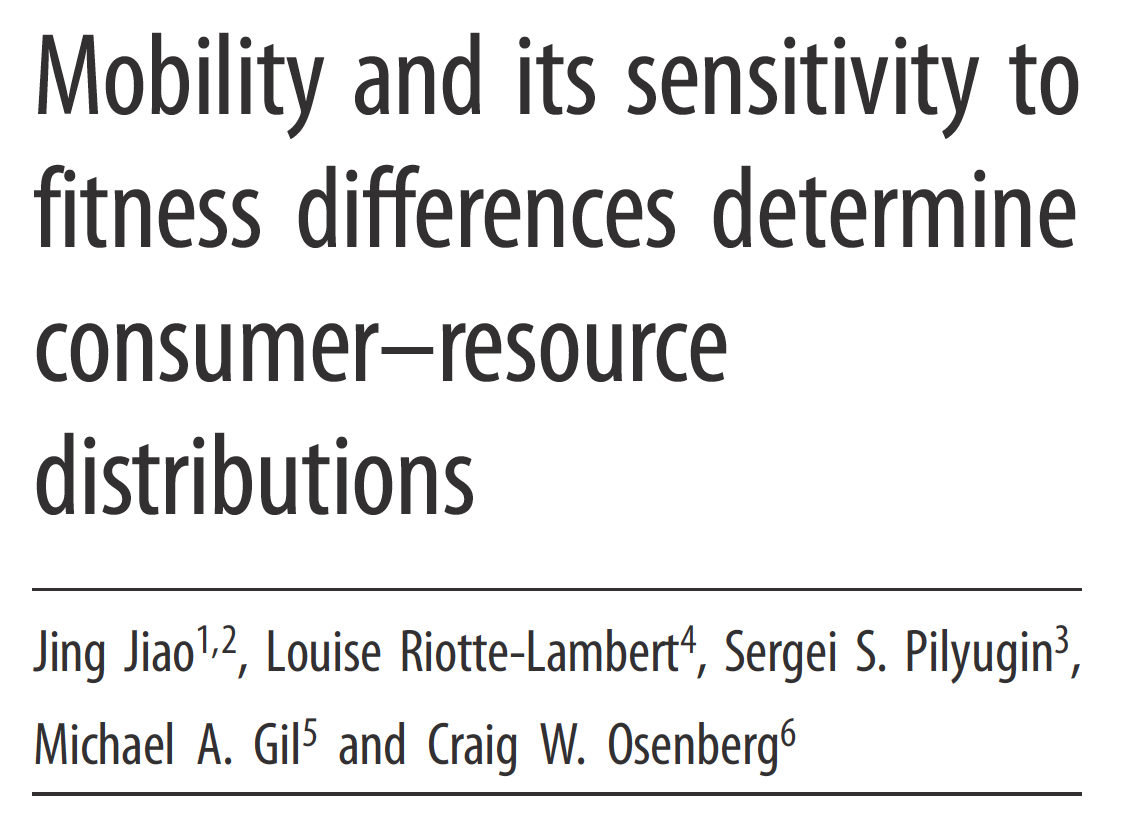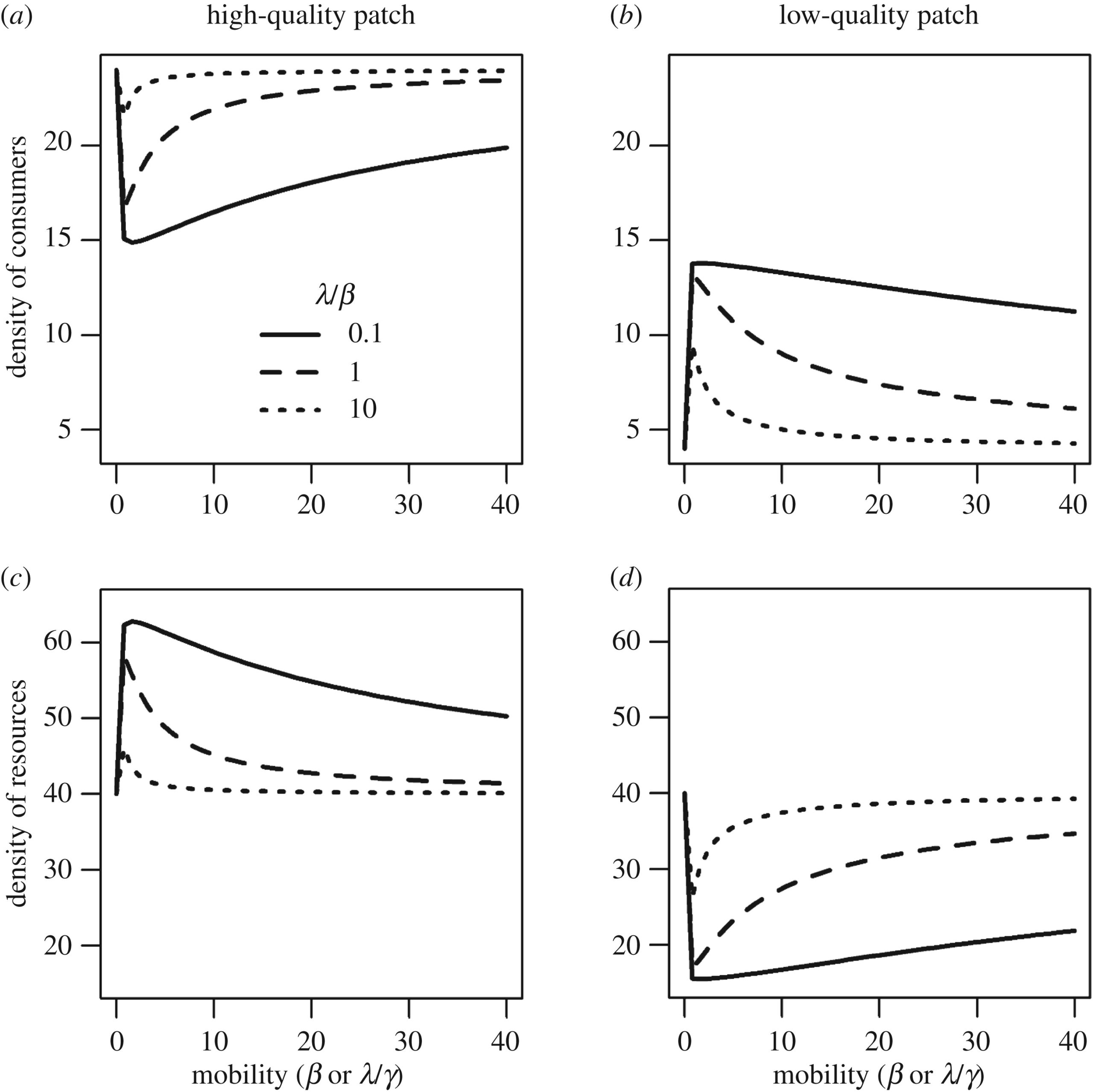
 (pdf) Abstract: An animal’s movement rate (mobility) and its ability to perceive fitness gradients (fitness sensitivity) determine how well it can exploit resources. Previous models have examined mobility and fitness sensitivity separately and found that mobility, modelled as random movement, prevents animals from staying in high quality patches, leading to a departure from an ideal free distribution (IFD). However, empirical work shows that animals with higher mobility can more effectively collect environmental information and better sense patch quality, especially when the environment is frequently changed by human activities. Here, we model, for the first time, this positive correlation between mobility and fitness sensitivity and measure its consequences for the populations of a consumer and its resource. In the absence of consumer demography, mobility alone had no effect on system equilibria, but a positive correlation between mobility and fitness sensitivity could produce an IFD. In the presence of consumer demography, lower levels of mobility prevented the system from approaching an IFD due to the mixing of consumers between patches. However, when positively correlated with fitness sensitivity, high mobility led to an IFD. Our study demonstrates that the expected covariation of animal movement attributes can drive broadly theorized consumer–resource patterns across space and time and could underlie the role of consumers in driving spatial heterogeneity in resource abundance.
(pdf) Abstract: An animal’s movement rate (mobility) and its ability to perceive fitness gradients (fitness sensitivity) determine how well it can exploit resources. Previous models have examined mobility and fitness sensitivity separately and found that mobility, modelled as random movement, prevents animals from staying in high quality patches, leading to a departure from an ideal free distribution (IFD). However, empirical work shows that animals with higher mobility can more effectively collect environmental information and better sense patch quality, especially when the environment is frequently changed by human activities. Here, we model, for the first time, this positive correlation between mobility and fitness sensitivity and measure its consequences for the populations of a consumer and its resource. In the absence of consumer demography, mobility alone had no effect on system equilibria, but a positive correlation between mobility and fitness sensitivity could produce an IFD. In the presence of consumer demography, lower levels of mobility prevented the system from approaching an IFD due to the mixing of consumers between patches. However, when positively correlated with fitness sensitivity, high mobility led to an IFD. Our study demonstrates that the expected covariation of animal movement attributes can drive broadly theorized consumer–resource patterns across space and time and could underlie the role of consumers in driving spatial heterogeneity in resource abundance.